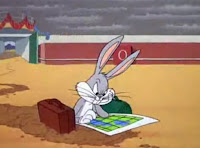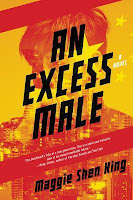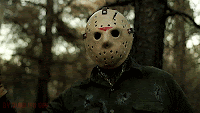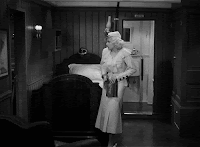 The catch here is that I chop my narrative up too much, people are going to spend less time reading my story and more time… well, deciphering it. My readers will hit the seventh flashback and they’ll try to figure out how it relates to the last six. And as they have to put more and more effort into reorganizing the story (instead of getting immersed in said story), it’s going to break the flow. If I keep piling on flashbacks and flash-forwards, and parallel stories… that flow’s going to stay broken. Shattered even.
The catch here is that I chop my narrative up too much, people are going to spend less time reading my story and more time… well, deciphering it. My readers will hit the seventh flashback and they’ll try to figure out how it relates to the last six. And as they have to put more and more effort into reorganizing the story (instead of getting immersed in said story), it’s going to break the flow. If I keep piling on flashbacks and flash-forwards, and parallel stories… that flow’s going to stay broken. Shattered even.Category: king
February 22, 2018 / 4 Comments
Our Story Begins Ten Years Ago…
 The catch here is that I chop my narrative up too much, people are going to spend less time reading my story and more time… well, deciphering it. My readers will hit the seventh flashback and they’ll try to figure out how it relates to the last six. And as they have to put more and more effort into reorganizing the story (instead of getting immersed in said story), it’s going to break the flow. If I keep piling on flashbacks and flash-forwards, and parallel stories… that flow’s going to stay broken. Shattered even.
The catch here is that I chop my narrative up too much, people are going to spend less time reading my story and more time… well, deciphering it. My readers will hit the seventh flashback and they’ll try to figure out how it relates to the last six. And as they have to put more and more effort into reorganizing the story (instead of getting immersed in said story), it’s going to break the flow. If I keep piling on flashbacks and flash-forwards, and parallel stories… that flow’s going to stay broken. Shattered even.November 29, 2017
Other Awesomer Books
 Blackbirds by Chuck Wendig – I am super-late to the table with this one, because Wendig’s been writing this series for five years now. Miriam Black is a foulmouthed alcoholic who’s gifted (or cursed) to immediately know how and when everyone she touches is going to die. After years of dealing with said ability, she’s seen someone’s future death that involves… her. It’s funny and dark and fantastic and I think there are five of these books now.
Blackbirds by Chuck Wendig – I am super-late to the table with this one, because Wendig’s been writing this series for five years now. Miriam Black is a foulmouthed alcoholic who’s gifted (or cursed) to immediately know how and when everyone she touches is going to die. After years of dealing with said ability, she’s seen someone’s future death that involves… her. It’s funny and dark and fantastic and I think there are five of these books now. An Excess Male by Maggie Shen King – I got to read an early copy of this and it’s just brilliant. A dystopian tale set in future-China, where the one child policy has gone… well, just like everyone predicted. Our four protagonists are trying to form a family while also each hiding an array of personal secrets and deciding who to trust with them. It’s a fantastic, slow-burn book that reads like the wonderfully twisted love child of The Handmaid’s Tale and Big Love.
An Excess Male by Maggie Shen King – I got to read an early copy of this and it’s just brilliant. A dystopian tale set in future-China, where the one child policy has gone… well, just like everyone predicted. Our four protagonists are trying to form a family while also each hiding an array of personal secrets and deciding who to trust with them. It’s a fantastic, slow-burn book that reads like the wonderfully twisted love child of The Handmaid’s Tale and Big Love.I said good day.
 We Are Wormwood by Autumn Christian – a beautifully surreal tale about a young woman growing up with insanity and then… well, descending into it herself with a few nudges from her demon girlfriend. Christian also has a fantastic collection of creepy/scary/sexy short stories called Ecstatic Inferno that I wolfed down in about a day. I befriended her on Twitter just so I can constantly prod her to write new stuff for me to read. I’m selfish that way.
We Are Wormwood by Autumn Christian – a beautifully surreal tale about a young woman growing up with insanity and then… well, descending into it herself with a few nudges from her demon girlfriend. Christian also has a fantastic collection of creepy/scary/sexy short stories called Ecstatic Inferno that I wolfed down in about a day. I befriended her on Twitter just so I can constantly prod her to write new stuff for me to read. I’m selfish that way.Revolution –by John Barber and Cullen Bunn—I was a die-hard comic fan for years, but got driven out by the constant (and often substandard) crossover events. I started reading some of IDW’s “Hasbroverse” books last year and was frustrated when they announced Revolution, their own upcoming crossover event.
Holy crap. This was my favorite comic book event in at least twenty years. It begins with a conflict between the GI Joe team and the Autobots which gets disrupted when Rom the Spaceknight shows up and uses his Neutralizer to incinerate General Joe Coulton before flying off again. If you were already a fan of IDW’s GI Joe or Transformers books, you can guess how a silver robot showing up and killing the Joes’ CO goes over. If you’re a fan of Rom… you know what this killing implies. Revolution is honestly suspenseful and dramatic, and has amazingly solid ties to all the books involved. It’s clearly a crossover that was planned far in advance, and it made me a regular at my comic shop again.
And anyway, those are some of my favorite things I read this year. Any one of them would make for a fantastic gift. And if you’ve got some suggestions of your own, please mention them in the comments down below.
Tomorrow… regular old writing advice. Thanks for your patience.
October 27, 2016
The Only Thing We Have To Fear Is…
Slasher stories—These are really about one thing, and that’s body count. How many men, women, and fornicating teens can the killer reduce to cold meat? Note that there’s a few distinctions between a slasher story and a torture porn story (see below), and one of them is usually the sheer number of people killed. There’s also often a degree of creativity and violence to the deaths, although it’s important to note it’s rarely deliberate or malicious. Often it’s just the killer using the most convenient tools at hand for the job—slasher tales are pretty much a parkour of death. The original Friday the 13th film series has pretty much become the standard for slasher pics, and it’s what most people tend to think of first when you mention the term.
A lot slasher stories used to have a mystery sub-element to them, and often it was trying to figure out who the killer was. Then it kind of morphed into being a twist… alas, often not a very well-done one. Slasher stories also developed a bad habit of falling back on the insanity defense and got stereotyped as “psycho-killer” movies. Which is a shame because some of them are actually very clever and creepy.
 The original monster story is, of course, Frankenstein. Godzilla is a monster, in a very obvious sense, but so are zombies, Samara in The Ring, and even Freddy Kruger. I still hold that the reason Jason X is so reviled by fans of the franchise is that the filmmakers turned it into a monster movie, not a slasher film like the ones before it.
The original monster story is, of course, Frankenstein. Godzilla is a monster, in a very obvious sense, but so are zombies, Samara in The Ring, and even Freddy Kruger. I still hold that the reason Jason X is so reviled by fans of the franchise is that the filmmakers turned it into a monster movie, not a slasher film like the ones before it. The Resident Evil franchise is horror adventure with zombies, just like my own Ex-Heroes. Jonathan Maberry’s definitely dabbled in it as well, with some of his eerier Joe Ledger books. The Ghostbustersmovies could fit here, too. There’s long-running shows like Grimm and Supernatural, and some of you may have seen a fun little cable series called Ash vs. Evil Dead.
The Resident Evil franchise is horror adventure with zombies, just like my own Ex-Heroes. Jonathan Maberry’s definitely dabbled in it as well, with some of his eerier Joe Ledger books. The Ghostbustersmovies could fit here, too. There’s long-running shows like Grimm and Supernatural, and some of you may have seen a fun little cable series called Ash vs. Evil Dead.  Y’see, Timmy, when a lot of us start off as writers, we flail a bit, usually in the attempt to copy stories we don’t quite understand the mechanics of. As such, we aren’t sure where our own stories fit under the big horror umbrella (or sci-fi, or fantasy, or…). We’ll begin a tale in one sub-genre, then move into a plot more fitting a different one, wrap up with an ending that belongs on a third, and have the tone of yet another through the whole thing.
Y’see, Timmy, when a lot of us start off as writers, we flail a bit, usually in the attempt to copy stories we don’t quite understand the mechanics of. As such, we aren’t sure where our own stories fit under the big horror umbrella (or sci-fi, or fantasy, or…). We’ll begin a tale in one sub-genre, then move into a plot more fitting a different one, wrap up with an ending that belongs on a third, and have the tone of yet another through the whole thing. 









